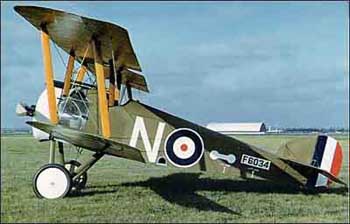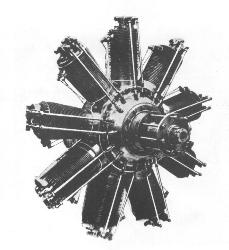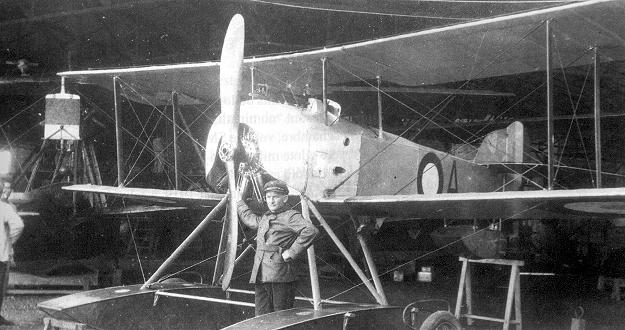
If pop-up windows should mask page views then please close them.
Historical Notes - Word War One
Royal Naval Air Service
The Royal Air Force was formed 01 Apr 1918 by amalgamating the Royal Flying Corp and the Royal Naval Air Service. No. 205 Squadron was formed on 01 Apr 1918 from No.5 Squadron RNAS at Bois de Roche in northern France. Equipped with D.H.4s, and later D.H.9As, it was engaged in bombing duties over Western Front for the rest of the war, returning to the UK in March 1919, where it disbanded on 22 January 1920, after ten months as a cadre unit.
A Flying School was opened by the RNAS at Vendome in November, 1916, and gradually expanded; the choice of the site was dictated by the fact that the winter weather in Central France is more suitable for flying training than it is in England. Men from the Royal Naval College at Greenwich were sent there to learn to fly.
Sopwith Camel

As the successor to the Pup, the Sopwith Aviation Company produced a fiery, temperamental little biplane, the famous, and notorious, Sopwith F.1 Camel. It was the first British type to carry twin Vickers guns; their breeches were enclosed in a 'hump', which gave the Camel its name.
In the hands of an experienced pilot the Camel could out manoeuvre any contemporary airplane, with the possible exception of the Fokker Triplane. From July 1917, when it reached the Front, until the Armistice, the Camel accounted for no less than 1,294 enemy machines.
In 1917 the Sopwith Camel airframe cost £874 10s. The Clerget engine that powered it cost £907 10s. The fact that the power unit usually cost more than the airframe is not always recognized. The Camel was most famous Clerget-powered aircraft of WW I.
The Clerget had neither the peculiar intake arrangements of the Gnome nor the strange connecting rods of the Le Rhone. Its valves were actuated by conventional rocker arms from two pushrods per cylinder, these constituting a recognition feature. Clergets were made in 110-hp and 130-hp models, and the 130 may have been a little overdeveloped, since it was subject to overheating. It used a special type of piston ring, called an "obdurator" ring, below the wrist pin to block heat transfer from the combustion area to the lower part of the cylinder. When this ring broke, as it was prone to do, the cylinder turned blue from the heat; a blue color meant that the steel had been heated to 600°F (316°C). Clergets were generally very well engineered except for this problem, those made in England by Gwynne being especially excellent.

One rigger's notebook has the comment "best rotary" written in for the Clerget.
Specifications: Model B; nine-cylinder air-cooled rotary; bore 120 mm., stroke 160 mm., displacement 16.3 litres, 130 hp. at 1250 rpm.; weight 173 kg.

SM Alexandre Suchey from NAS Corfou and his Sopwith 130 Clerget.
This page was created
02 February 2007